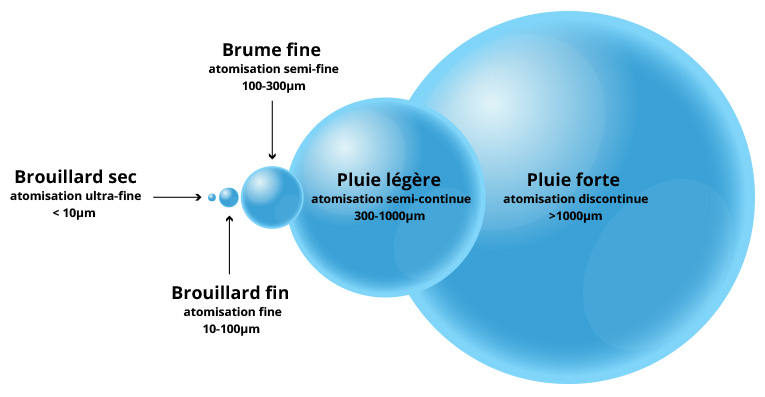La désinfection des équipements et des surfaces est un élément essentiel à la conduite d’une recherche animale sûre et efficace, en réponse aux exigences de la plupart des normes et réglementations internationales.
Q: QUEL EST LE MEILLEUR PRODUIT CHIMIQUE POUR UNE DÉSINFECTION OPTIMALE?
A: H2O2 (PEROXYDE D’HYDROGÈNE)
Le peroxyde d’hydrogène est un produit chimique antimicrobien, largement utilisé sous forme liquide et gazeuse, pour les applications de désinfection et de stérilisation chimique. L’utilisation de H2O2 permet :
- Une activité antimicrobienne élevée et à large spectre
- La disponibilité de solutions à haute stabilité et à longue durée de conservation
- Une sécurité accrue pour les utilisateurs, les animaux et l’environnement, par rapport à d’autres microbicides, lorsqu’ils sont utilisés à des concentrations et/ou dans des conditions sécurisées
Pour ces raisons, l’H2O2 est utilisé dans de nombreux produits et pour de nombreuses applications dans les établissements de santé et de recherche biomédicale. Outre sa sécurité, il offre de meilleurs atouts face aux microbicides suivants qui présentent des inconvénients, par exemple :
- Alcool : n’est ni un stérilisant ni un désinfectant de haut niveau. Son évaporation rapide ne permet pas une réduction logarithmique significative
- Chlore : corrosivité des métaux, inactivation par la matière organique et stabilité relative
Q : QUELLE EST LA MEILLEURE FORME DE H2O2 À UTILISER POUR LA DSVA ?
A : BROUILLARD SEC “DRY FOG” (gouttelettes ultrafines < 10µm)
Les gouttelettes de H2O2 générées par ”dry-fogging” se diffusent de façon homogène dans un volume, ce qui permet de l’utiliser pour une désinfection très efficace des surfaces par voie aérienne (DSVA), même à de faibles concentrations (7 à 10 %). Les microgouttelettes ainsi générées sont devenues une alternative populaire aux autres méthodes antimicrobiennes chimiques et physiques. En effet, cette technique :
- Utilise 100 % de son principe actif, ce qui lui confère une très grande efficacité
- S’appuie sur des produits prêts à l’emploi
- Est disponible en solutions pures sans additifs, ce qui ne laisse aucun résidu
- Fonctionne à température normale (ambiante)
- Présente une sécurité et une absence de corrosivité liées à la faible concentration du produit utilisé
- Repose sur une concentration suffisante en H2O2, qui permet une pénétration optimale dans les cellules microbiennes et une efficacité

Q : QUELLE TECHNOLOGIE DE DIFFUSION H2O2 EST LA PLUS ADAPTÉE ?
A : PROCÉDÉ DE « DRY FOFFING »
La diffusion par brumisation sèche « dry fogging » (gouttelettes ultrafines, calibrées de 5 à 10µm) est la méthode la plus simple, la plus adaptée et la plus efficace pour les multiples applications de DSVA dans la recherche sur les animaux pour les raisons suivantes :
- Diffusion complète des gouttelettes avant la gravitation
- L’H2O2 se comporte comme un gaz après vaporisation, c’est-à-dire qu’il se répand de manière homogène dans tous les volumes, atteignant même les endroits inaccessibles
- La diffusion à température ambiante ne provoque pas de micro condensation sur les surfaces froides comme le fait la vapeur d’eau à haute température avant de repasser en phase vapeur
- Efficace pour la désinfection des appareils électroniques, des tissus et du papier
- Pas besoin vidée ou étanchéifier les salles
- N’utilise pas d’air comprimé ni de technologie à ultrasons
- Efficacité rapide (temps d’évaporation beaucoup plus court)
- La technologie permet des systèmes portables, conviviaux, à commande à distance et économique
Non destiné à être utilisé aux États-Unis, non approuvé par l’EPA
Références:
ILAR Guide for the Care and Use of Laboratory Animals (2011)
The Use of Hydrogen Peroxide for Disinfection and Sterilization Applications, Gerald McDonell, April 2014. Link
Guideline for Disinfection and Sterilization in Healthcare Facilities, CDC, 2008. Link
